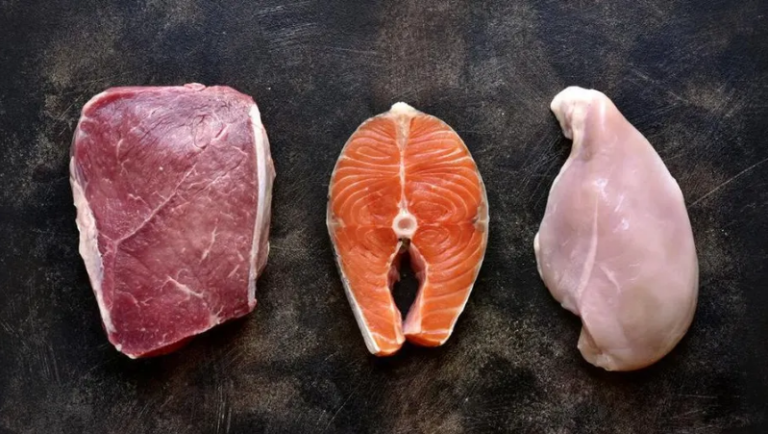Uncover the Transformative Power of the Paleo Diet

The Paleo diet, also known as the caveman diet, is gaining popularity for its transformative effects on health and wellness. This dietary approach is based on consuming foods that our ancestors would have eaten during the Paleolithic era. By focusing on whole, unprocessed foods, the Paleo diet aims to improve overall well-being and address modern health concerns. In this blog post, we will delve into the history, key principles, benefits, recommended foods, and tips for successfully implementing the Paleo diet. Let’s explore the fascinating world of the Paleo diet and unlock its potential for a healthier lifestyle.
The History of the Paleo Diet
The Paleo Diet, also known as the caveman diet or Stone Age diet, is based on the dietary patterns of our ancestors from the Paleolithic era. This diet gained popularity in the 1970s through the work of gastroenterologist Walter L. Voegtlin, who emphasized the consumption of foods that our early hunter-gatherer ancestors would have eaten.
Key Points:
- Origin: The idea behind the Paleo Diet is rooted in the belief that our bodies are genetically mismatched with modern diets and that reverting to a hunter-gatherer diet can promote better health.
- Evolution: Over time, the concept evolved, and in the early 2000s, it gained widespread attention through the book "The Paleo Diet" by Dr. Loren Cordain, a leading expert on the Paleolithic diet.
- Principles: The Paleo Diet emphasizes consuming lean meats, fish, fruits, vegetables, nuts, and seeds, while excluding grains, legumes, processed foods, and dairy products.
This diet approach has sparked significant interest due to its focus on whole, unprocessed foods and its potential to improve overall health.
The History of the Paleo Diet paints a clear picture of its origins and development, shedding light on the principles that form the foundation of this dietary approach.
Key Principles of the Paleo Diet
The Paleo Diet is founded on the idea of consuming foods that our ancestors from the Paleolithic era ate. The key principles of the Paleo Diet include:
-
High Protein Intake: The diet emphasizes the consumption of lean meats, fish, and eggs, which are excellent sources of protein. Protein aids in muscle building, repair, and overall body strength.
-
Healthy Fats: Healthy fats from sources like avocados, nuts, and olive oil are essential in the Paleo Diet. These fats provide sustainable energy and support brain function.
-
Limited Carbohydrates: The focus is on consuming carbohydrates from fruits and vegetables rather than grains and processed sugars. This helps in stabilizing blood sugar levels and promoting weight management.
-
Avoiding Processed Foods: Processed foods high in additives, preservatives, and artificial ingredients are eliminated. This reduces the intake of unhealthy chemicals and enhances overall well-being.
-
Emphasis on Whole Foods: The diet encourages the consumption of whole, nutrient-dense foods that are rich in vitamins, minerals, and antioxidants. This promotes better digestion and supports the body’s natural functions.
By adhering to these key principles, individuals can experience the transformative power of the Paleo Diet in improving their overall health and well-being.
Benefits of Following the Paleo Diet
When it comes to the Paleo Diet, there are numerous benefits to be experienced. From weight loss to improved heart health, this diet offers a range of advantages for those who choose to follow its principles.
Here are some of the key benefits of embracing the Paleo Diet:
-
Weight Loss: By focusing on whole and unprocessed foods, the Paleo Diet naturally helps in weight management and shedding excess pounds.
-
Improved Energy Levels: The Paleo Diet emphasizes high-quality proteins and healthy fats, which can lead to increased energy levels throughout the day.
-
Better Digestion: The exclusion of processed foods and refined sugars can lead to improved digestion and reduced bloating for many people.
-
Reduced Inflammation: The emphasis on fruits, vegetables, and healthy fats in the Paleo Diet can help reduce inflammation in the body.
-
Enhanced Physical Performance: Athletes and fitness enthusiasts often report improved performance and endurance when following the Paleo Diet due to the high-quality nutrients it provides.
-
Lower Risk of Chronic Diseases: Following the Paleo Diet may lower the risk of developing chronic conditions such as diabetes, heart disease, and certain types of cancer due to its focus on nutrient-dense foods.
In comparison to other diets, the Paleo Diet stands out for its emphasis on whole foods and the potential to improve overall health in various ways.
Foods to Eat on the Paleo Diet
When following the Paleo Diet, it’s essential to focus on consuming whole, unprocessed foods that our ancestors would have eaten. By emphasizing natural and nutrient-dense options, individuals can experience numerous health benefits. Here are some key foods to eat while adhering to the Paleo Diet:
-
Lean Protein: Incorporate sources such as grass-fed beef, free-range poultry, and wild-caught fish. These protein options are not only rich in essential nutrients but also align with the diet’s principles.
-
Fruits and Vegetables: Consume a variety of colorful fruits and vegetables, as they offer an array of vitamins, minerals, and antioxidants. Berries, leafy greens, and root vegetables are excellent choices.
-
Healthy Fats: Include healthy fats from sources like avocados, nuts, and seeds. These provide energy and support overall well-being.
-
Eggs: Eggs are a versatile and nutritious choice that can be enjoyed in various ways, serving as a great addition to the Paleo Diet.
By focusing on these foundational foods, individuals can nourish their bodies while following the Paleo Diet. These options provide a range of nutrients and support overall health and well-being.
Foods to Avoid on the Paleo Diet
When following the Paleo Diet, it’s essential to eliminate certain foods that were not consumed by our hunter-gatherer ancestors. By avoiding these foods, you can optimize the health benefits of the diet and support a more natural, whole-food way of eating. Here are the foods to avoid on the Paleo Diet:
-
Grains: Grains such as wheat, oats, barley, and rice are excluded from the Paleo Diet due to their high carbohydrate content and potential to cause inflammation.
-
Legumes: Legumes like beans, lentils, and peanuts contain anti-nutrients and lectins, which can hinder nutrient absorption and may cause digestive issues.
-
Dairy: Dairy products, including milk, cheese, and yogurt, are omitted from the Paleo Diet as they were not consumed by early humans and may cause lactose intolerance for some individuals.
-
Processed Foods: Processed foods, including refined sugar, vegetable oils, and artificial additives, are to be avoided as they do not align with the whole-food approach of the Paleo Diet.
-
Trans Fats: Artificial trans fats found in hydrogenated oils and margarine should be eliminated due to their adverse effects on heart health and inflammation.
By steering clear of these foods, you can stay true to the principles of the Paleo Diet and maximize its potential health benefits.
Tips for Successfully Implementing the Paleo Diet
Transition: Transitioning to a Paleo lifestyle can be challenging, but with the right approach, it can be incredibly rewarding. Here are some tips to help you successfully implement the Paleo diet:
-
Gradual Transition: Instead of making drastic changes overnight, consider gradually phasing out processed foods and integrating Paleo-friendly options. This allows for a smoother adjustment period.
-
Meal Planning: Plan your meals in advance to ensure you have an ample supply of Paleo-friendly options on hand. This can help you avoid the temptation of non-Paleo foods.
-
Explore Paleo Recipes: Get creative in the kitchen by exploring a variety of Paleo recipes. This can keep your meals exciting and help you stay committed to the diet.
-
Stock Up on Essentials: Keep your kitchen stocked with Paleo staples such as lean meats, fish, eggs, nuts, seeds, and a variety of fresh fruits and vegetables.
-
Stay Informed: Educate yourself about the Paleo diet to understand its principles and benefits. This knowledge can help you stay motivated and committed to the lifestyle.
-
Seek Support: Connect with others who follow the Paleo diet for meal ideas, support, and motivation. Online communities and local groups can be valuable resources.
By implementing these tips, you can ease the transition to the Paleo diet and set yourself up for long-term success. Embracing this lifestyle can lead to improved overall health and well-being.
Remember, the key to success is consistency and commitment. Make small, sustainable changes and celebrate the progress along the way.
Common Misconceptions about the Paleo Diet
When it comes to the Paleo Diet, there are several misconceptions that often lead to misunderstandings about its principles and benefits. Let’s address some of the common misconceptions:
-
Too Restrictive: One of the major misconceptions about the Paleo Diet is that it is overly restrictive. While it does eliminate processed foods, grains, and legumes, there is still a wide range of delicious and nutritious foods to enjoy, including meats, fish, eggs, fruits, and vegetables.
-
Low in Fiber: Some people believe that the Paleo Diet lacks fiber due to the absence of grains. However, the diet encourages the consumption of high-fiber foods such as fruits, vegetables, and nuts, which provide an ample amount of dietary fiber.
-
Unsustainable for Long-Term: Another misconception is that the Paleo Diet is not sustainable for the long term. In reality, many individuals successfully maintain this diet as a lifestyle choice, benefiting from its emphasis on whole, nutrient-dense foods.
-
Nutrient Deficiency: There is a misconception that the Paleo Diet may lead to nutrient deficiencies. However, with careful meal planning and inclusion of a variety of foods, individuals can meet their nutritional needs while following the Paleo Diet.
By dispelling these misconceptions, we can better understand the Paleo Diet’s true potential for promoting overall health and well-being.





